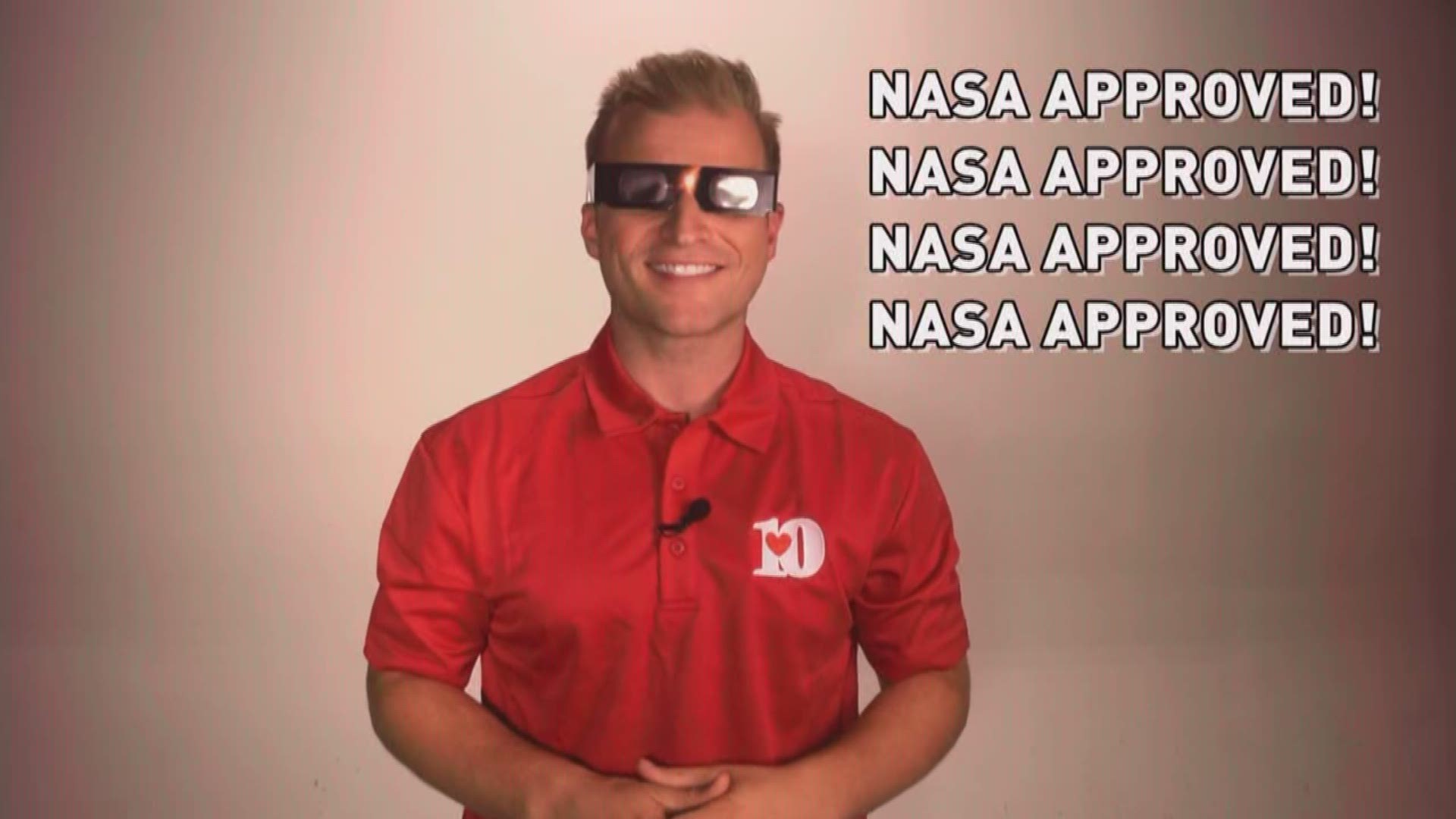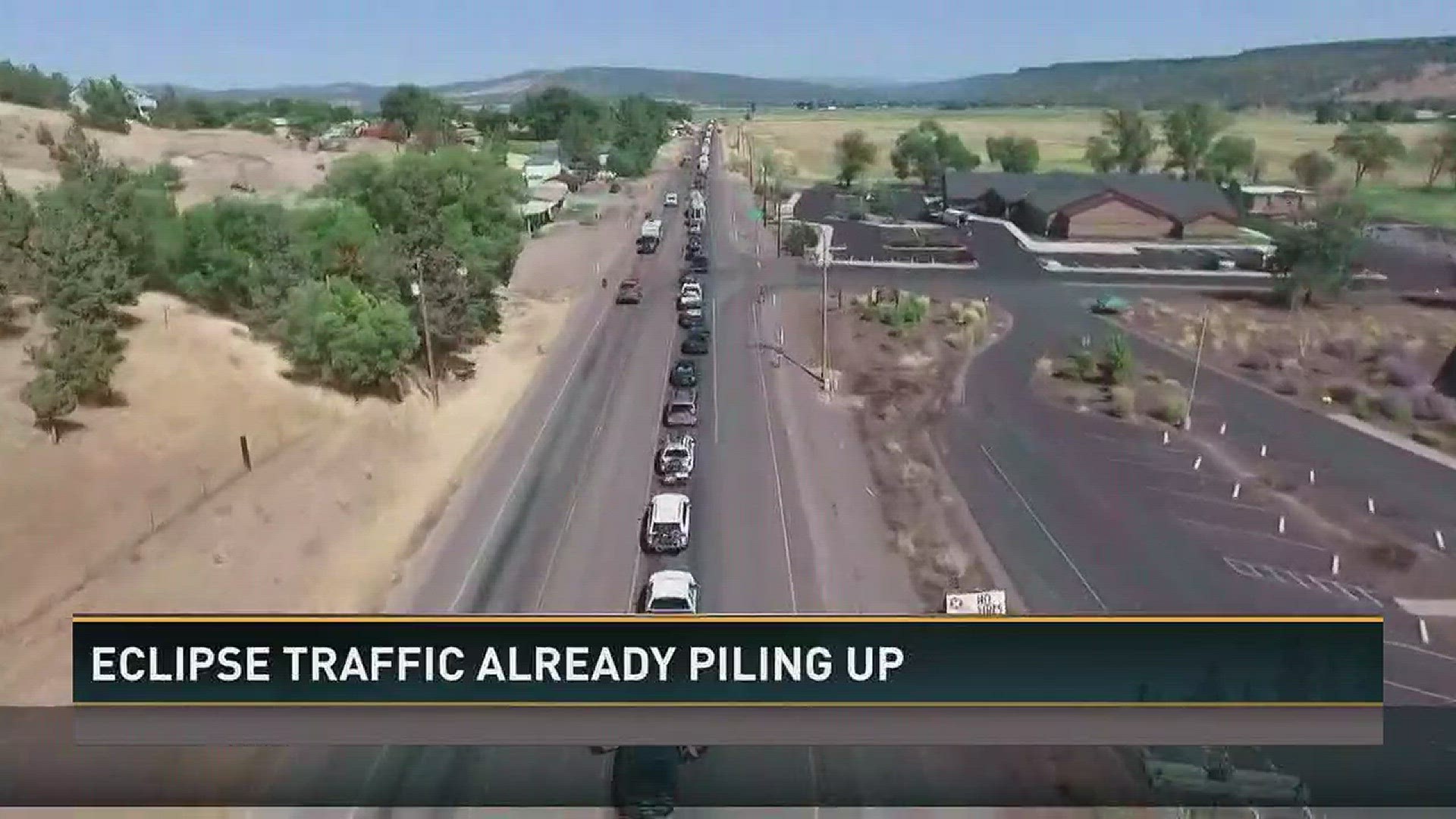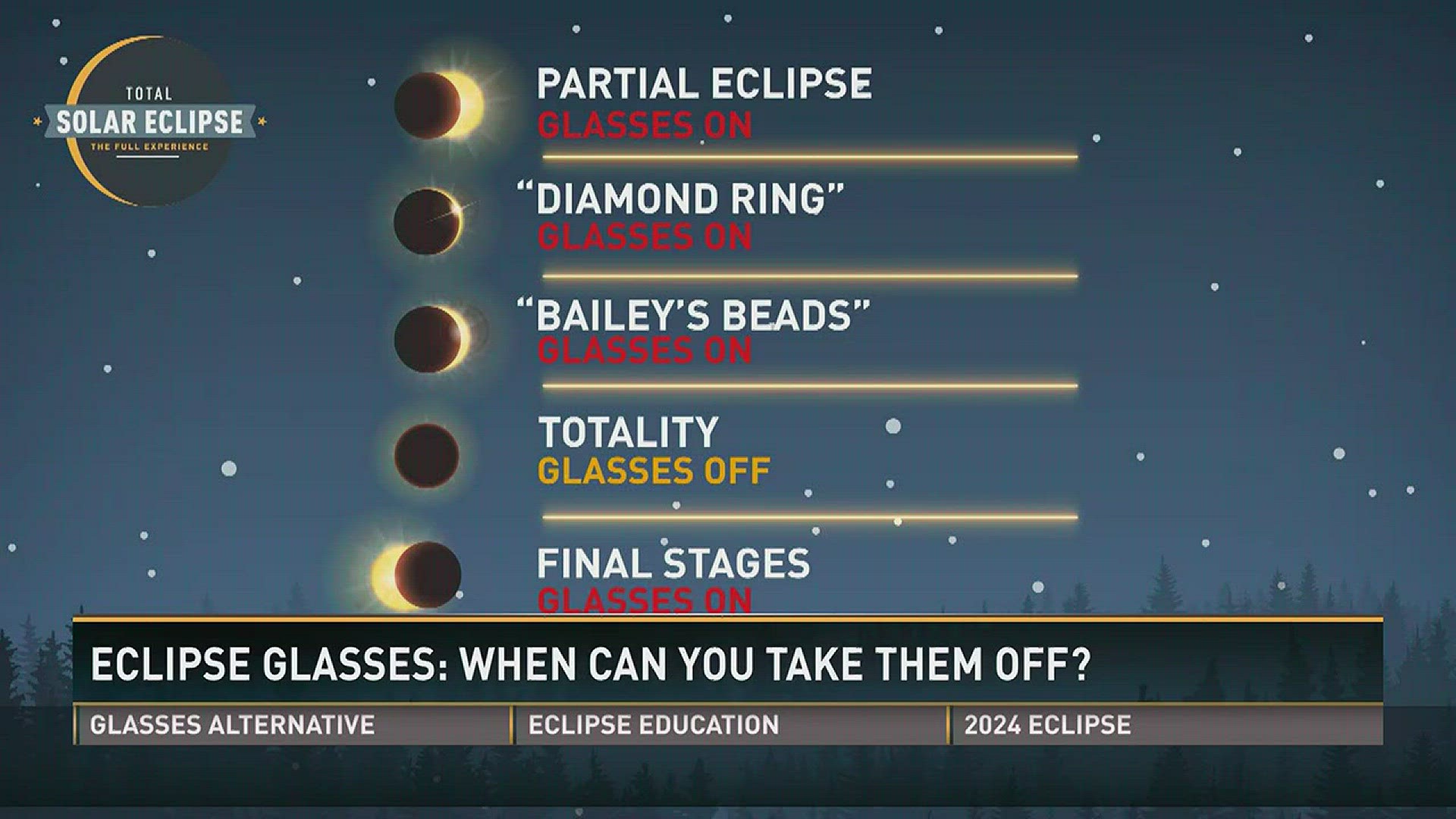People have been planning for months, even years, for Monday's total solar eclipse. It's the first coast-to-coast eclipse since 1918.
In case you haven't been planning for the past 99 years, we've put together some last minute eclipse tips to tell you everything you need to know about the Great American Eclipse.
FULL COVERAGE: Total Solar Eclipse
Weather
The forecast looks good for eclipse day in East Tennessee. We're expecting partly to mostly sunny skies with warm temperatures. The visibility should be fair to good come eclipse time.
Remember, when the eclipse actually happens, people will experience a noticeable drop in temperature as the sun becomes blocked. You can expect the temperature to lower by about 2 to 8 degrees.

There is a chance we'll see pop-up thunderstorms and showers later in the afternoon.
Traffic
If you're driving somewhere to view the eclipse, you need to allow plenty of extra time to get to your destination.
The Tennessee Department of Transportation anticipates heavy traffic on interstates and state routes during the total solar eclipse on Monday. NASA has said it could be the worst day of traffic in U.S. history.
This eclipse will span 14 states on a trip across the country. According to the Great American Eclipse website, Tennessee has the second highest population within driving distance of the path of totality. That makes the volunteer state a prime destination.
TDOT recommends drivers near the path of totality prepare for the eclipse as if they're getting ready for a snowstorm.
"You’ve got to have a full tank of gas because you may have some delays that you do not anticipate on a normal basis,” said TDOT spokesperson Mark Nagi.
If you happen to be on the road during the eclipse, do not stop on the roadway. TDOT and Tennessee Highway Patrol officials are warning drivers not to slow down or stop on the roadway - it's not only dangerous, it's also illegal.
Glasses
Hopefully you have your eclipse glasses by now, because they've become increasingly difficult to find as we get closer to eclipse day.
Eye protection is very important for viewing the eclipse. Looking at the sun is always bad for your eyes, but looking at an eclipse with the naked eye can cause serious, lasting damage.
Fake, damaged, or un-certified glasses can cause a permanent burn inside the eye known as a "solar maculopathy."
Dr. Paul Froula, an ophthalmologist at University Eye Surgeons in Knoxville, said while the sun’s light isn’t any more intense during an eclipse, the potential for damage is greater. On a normal day, the sun is too bright, and we naturally look away, protecting our eyes. But during the partial eclipse, the light is dimmer, so people are able to stare at the sun long enough to cause damage.
That's where eclipse glasses come in.
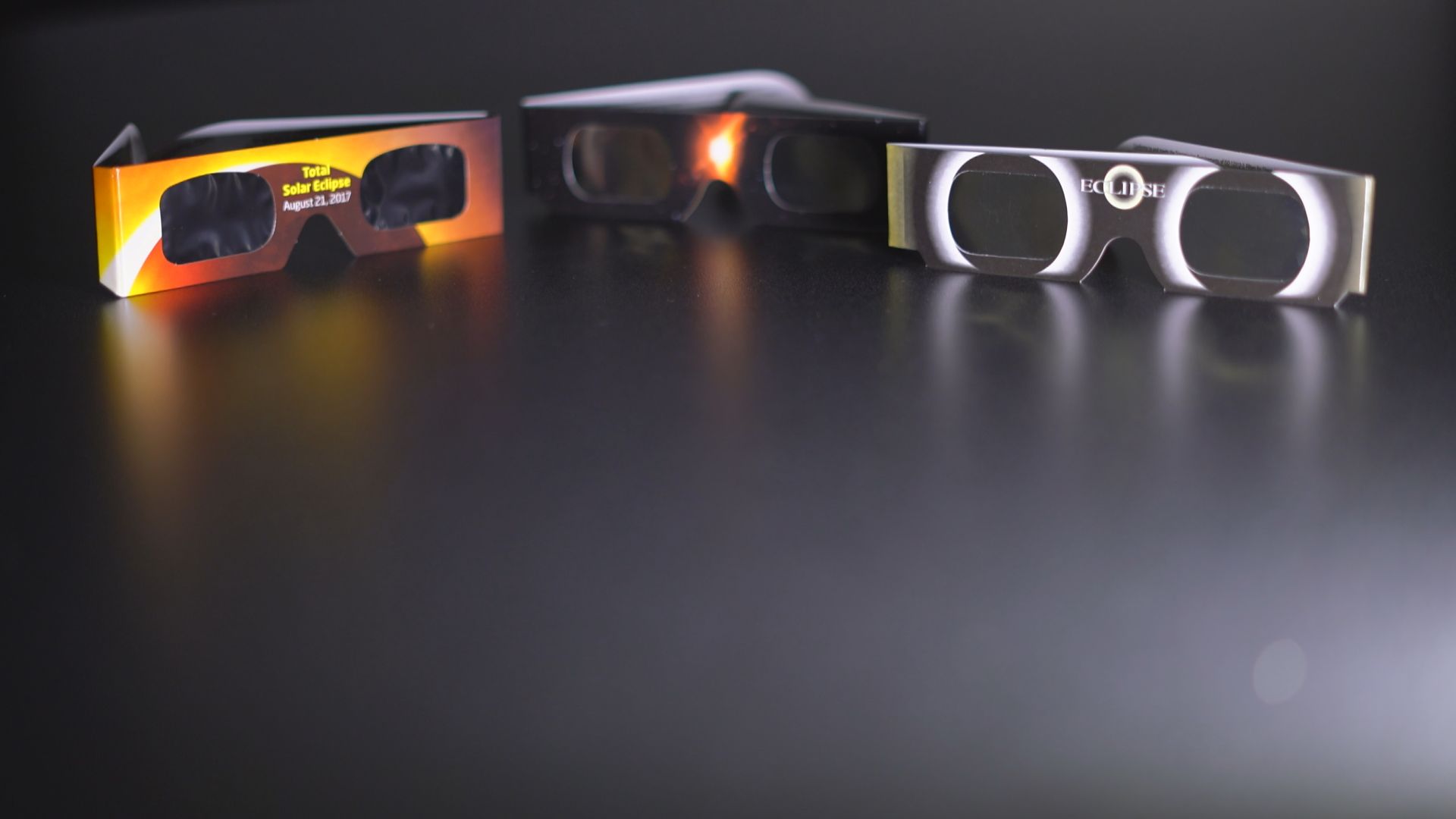
The American Astronomical Society has a list of reputable manufacturers and authorized dealers of eclipse glasses.
NASA says if your eclipse glasses or viewers are compliant with the ISO 12312-2 safety standard, you can safely look at the eclipse for as long as you wish.
If you are in the path of totality, you can safely look at the eclipse without glasses once it reaches totality. This video shows when you need to wear your eclipse glasses.
Timing
The Great American Eclipse will cross the U.S. from Oregon to South Carolina. The path of totality will cross 14 states, but all 50 states will see a partial eclipse.
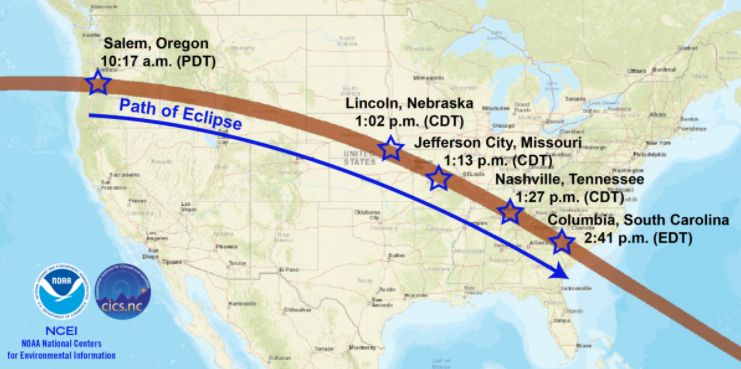
We'll see the eclipse in the mid-afternoon in East Tennessee.
Sweetwater will have one of the best vantage points in the country for the eclipse, and will experience two minutes and 37 seconds of totality.
In Sweetwater, the partial eclipse will begin at 1:03 p.m. on Monday. It will grow progressively darker as the moon moves in front of the sun, with the total eclipse beginning at 2:32 p.m. The total eclipse will end at 2:35 p.m., and the partial eclipse will end at 3:58 p.m.
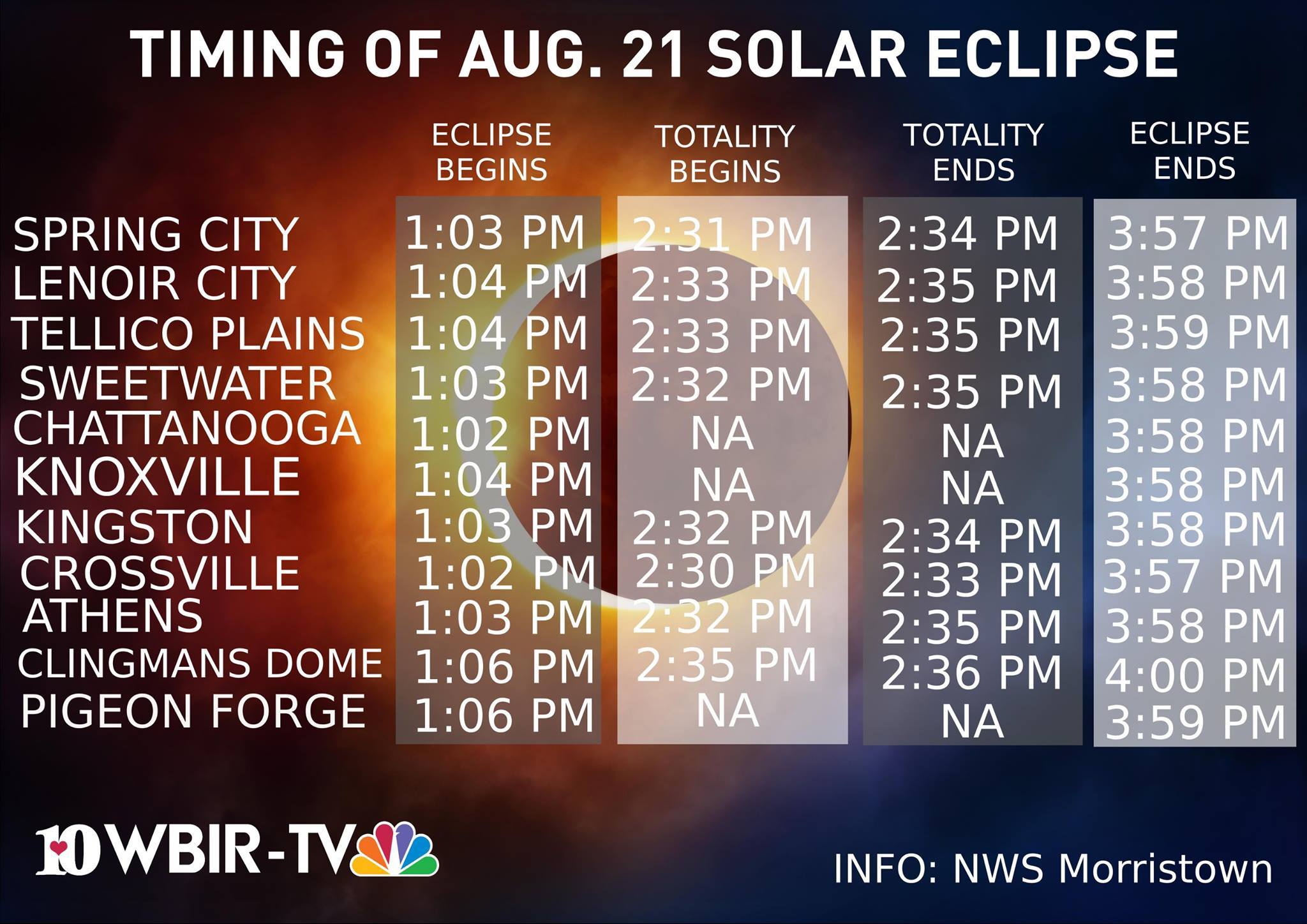
You can find out the exact time to view the eclipse in your town on this map from the National Weather Service.
Again, this is the first time in almost 100 years a total solar eclipse will be visible from coast-to-coast. We'd love to see your photos of the big event! Share them with us on Facebook, Twitter and Instagram with #10Eclipse.
WBIR will have live coverage of the eclipse across East Tennessee all day Monday, with an eclipse special from noon to 3 p.m.

